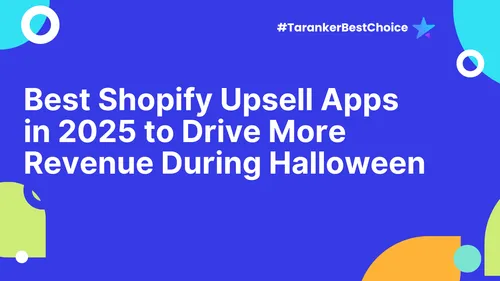In today’s rapidly evolving digital landscape, social commerce is emerging as a game changer for brands and consumers alike. As the boundaries between social media and e-commerce blur, 2025 promises to be a landmark year where social platforms not only drive community engagement but also directly influence purchasing decisions. In this post, we’ll explore what social commerce is, examine the key trends shaping it in 2025, and provide data-driven insights to help businesses harness its potential.
What Is Social Commerce?
Social commerce refers to the integration of e-commerce and social media, where brands leverage social platforms to promote, sell, and distribute products and services. Unlike traditional online shopping, social commerce transforms the buying process into a more interactive, community-driven experience. Consumers can discover products, read reviews, interact with influencers, and even complete transactions—all within their favorite social media apps.
Key Components of Social Commerce
-
In-App Purchasing: Platforms like Instagram, Facebook, and TikTok now offer built-in shopping features, allowing users to purchase products without leaving the app.
-
User-Generated Content (UGC): Reviews, photos, and videos shared by customers serve as powerful social proof, influencing purchasing decisions.
-
Influencer Collaborations: Influencers bridge the gap between brands and consumers by curating products and endorsing brands authentically.
-
Interactive Experiences: Features such as live streaming, augmented reality (AR) try-ons, and shoppable posts enhance user engagement and create immersive shopping experiences.
The Evolution of Social Commerce
The roots of social commerce can be traced back to the early days of social media when platforms were primarily used for networking and content sharing. However, as user bases grew and engagement deepened, companies began exploring ways to monetize these platforms. The first wave of social commerce was largely experimental—ads linked to external e-commerce sites. Today, with advanced in-app functionalities, social commerce has become a fully integrated ecosystem.
According to Statista, global social commerce sales were already witnessing significant growth in the early 2020s. This trend accelerated as platforms invested heavily in seamless shopping experiences, culminating in a robust market where over 20% of total online sales in some regions are now attributed to social commerce activities.
Key Trends Shaping Social Commerce in 2025
1. Hyper-Personalization Through AI and Machine Learning
Artificial intelligence (AI) and machine learning (ML) are now at the core of delivering personalized shopping experiences. These technologies analyze user behavior, preferences, and engagement patterns to serve tailored product recommendations and advertisements. For instance, platforms like Instagram and Facebook are using AI-driven algorithms to refine product suggestions, increasing conversion rates by up to 30% according to Business Insider Intelligence.
2. Integration of Augmented Reality (AR) and Virtual Reality (VR)
The adoption of AR and VR is transforming how consumers interact with products online. In 2025, more brands are expected to implement AR features that allow shoppers to virtually “try on” products—from clothing to cosmetics—before making a purchase. A recent survey by Hootsuite found that 65% of consumers are more likely to buy a product if they can visualize it through AR. This interactive approach not only enhances the user experience but also reduces the likelihood of returns.
3. Rise of Livestream Shopping
Livestream shopping has taken center stage as a dynamic sales channel. Influencers and brands host live sessions where they showcase products, answer viewer questions in real time, and offer exclusive discounts. This trend is particularly popular among younger consumers, with GlobalWebIndex reporting that nearly 54% of social media users have purchased a product during a livestream event. Livestream shopping creates a sense of urgency and community, driving immediate sales while strengthening brand loyalty.
4. The Convergence of Social and Mobile Commerce
Mobile commerce (m-commerce) continues to surge, and its convergence with social commerce is inevitable. With smartphones becoming the primary device for internet access worldwide, platforms are optimizing their interfaces for mobile users. Enhanced mobile payment options, one-click checkouts, and streamlined interfaces ensure that the shopping experience is fast, convenient, and secure. This trend is bolstered by the fact that over 80% of Gen Z consumers prefer using mobile devices for online shopping, according to eMarketer.
5. Community-Driven Shopping Experiences
Social media thrives on community and connection, and in 2025, brands are increasingly leveraging these dynamics. Niche communities, online groups, and brand-specific forums are being used as platforms for product launches, feedback sessions, and loyalty programs. When consumers feel part of a community, they are more likely to become repeat customers. This community-centric approach not only drives sales but also builds a sustainable brand ecosystem that can weather market fluctuations.
Data-Driven Insights and Market Projections
The numbers behind social commerce trends are compelling:
-
Market Growth: According to Statista, the global social commerce market is projected to exceed $604.5 billion in sales by the end of 2025.
-
Consumer Behavior: Business Insider Intelligence estimates that nearly 40% of US consumers have made purchases directly through social media channels.
-
Influencer Impact: Studies indicate that influencer marketing can generate up to 11 times the ROI compared to traditional digital marketing methods, further emphasizing the strategic importance of social commerce.
These figures underscore the transformative impact of social commerce on the global retail landscape. As more consumers shift their shopping habits online, brands that invest in social commerce are likely to reap substantial benefits in both reach and revenue.
Challenges and Opportunities
Challenges
-
Data Privacy Concerns: With the increased use of AI and ML, there are growing concerns about data privacy and security. Brands must ensure compliance with data protection regulations such as GDPR and CCPA to maintain consumer trust.
-
Platform Saturation: As more brands flock to social commerce, competition on major platforms intensifies. Standing out in a crowded marketplace requires innovative strategies and unique value propositions.
-
Technology Adoption: While AR, VR, and live-streaming are transformative, they require significant investments in technology and training. Smaller brands might struggle with the costs and complexities of integrating these advanced features.
Opportunities
-
Enhanced Customer Engagement: Social commerce offers unparalleled opportunities for brands to engage with their customers on a personal level. Interactive features, personalized recommendations, and community building can lead to higher customer satisfaction and loyalty.
-
Direct-to-Consumer (DTC) Models: By cutting out traditional retail middlemen, brands can enjoy higher profit margins and more control over their customer experience.
-
Global Reach: Social media platforms have billions of users worldwide, providing brands with the opportunity to reach new markets and diverse demographics with minimal geographical barriers.
Looking Ahead: Strategies for Success
For businesses aiming to capitalize on the social commerce boom in 2025, here are some actionable strategies:
-
Invest in Technology: Embrace AI, AR, and VR to offer cutting-edge, personalized shopping experiences.
-
Leverage Influencer Partnerships: Collaborate with influencers who resonate with your target audience to build trust and drive sales.
-
Enhance Mobile Optimization: Ensure your social commerce platforms are fully optimized for mobile devices, offering seamless in-app purchasing experiences.
-
Foster Community Engagement: Create and nurture online communities around your brand. Encourage user-generated content and active participation to build lasting relationships with your customers.
-
Prioritize Data Security: Implement robust data protection measures to safeguard customer information and maintain compliance with privacy regulations.
Conclusion
Social commerce is no longer a niche concept - it's a mainstream force reshaping the way we shop online. As we progress through 2025, the convergence of social media, mobile commerce, and emerging technologies is set to redefine consumer expectations and brand strategies alike. By understanding the current trends and leveraging data-driven insights, businesses can position themselves to thrive in this dynamic environment.
For more detailed statistics and further reading, be sure to check out sources like Statista, Business Insider Intelligence, and eMarketer. Embrace the future of social commerce today, and transform your digital strategy to stay ahead of the curve!













